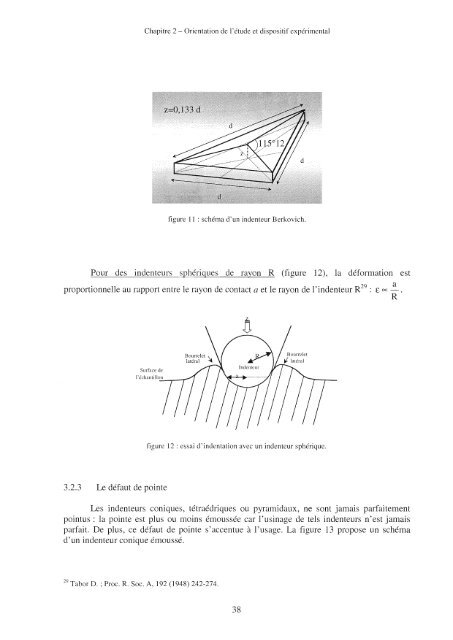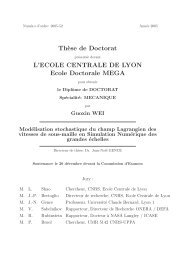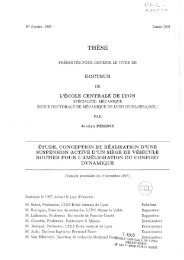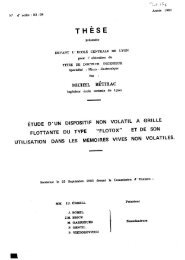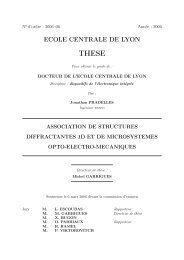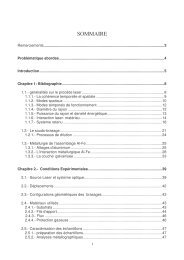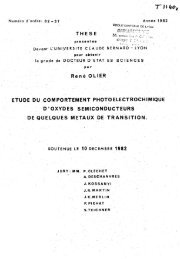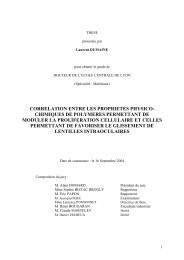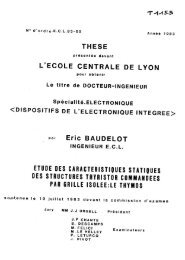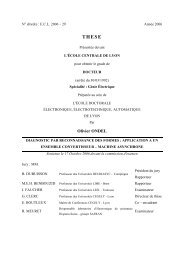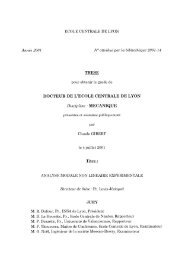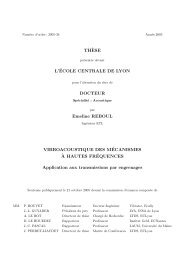Sur les mécanismes de rayures des vernis de finition automobiles
Sur les mécanismes de rayures des vernis de finition automobiles
Sur les mécanismes de rayures des vernis de finition automobiles
Create successful ePaper yourself
Turn your PDF publications into a flip-book with our unique Google optimized e-Paper software.
Chapitre 2 Orientation dc l'étu<strong>de</strong> et dispositilexpérimental<br />
z=O.133 d<br />
d<br />
d<br />
d<br />
lgurc Il<br />
schéma d'un in<strong>de</strong>nteur Berkovich.<br />
Pour <strong>de</strong>s in<strong>de</strong>nteur. ph.ictues <strong>de</strong> rayon R (figure 12), la déformation est<br />
proportionnelle au l'apport entre le tlyon <strong>de</strong> contact a et le rayon <strong>de</strong> l'in<strong>de</strong>nteur R29 : e<br />
a<br />
<strong>Sur</strong>face <strong>de</strong><br />
I 'échaut t I lot i<br />
Bourrelet<br />
latéral<br />
Bourrelet<br />
latéral<br />
lurc 12 : essai d'in<strong>de</strong>ntation avec un indcnteur sphérique.<br />
3.2.3 Le défaut <strong>de</strong> pointe<br />
Les in<strong>de</strong>nteurs coniques, tétraédriques ou pyramidaux, ne sont jamais parfaitement<br />
pointus : la pointe est plus ou moins émoussée car l'usinage <strong>de</strong> tels in<strong>de</strong>nteurs n'est jamais<br />
parfait. De plus, ce défaut <strong>de</strong> pointe s'accentue à l'usage. La figure 13 propose un schéma<br />
d'un in<strong>de</strong>nteur conique émoussé.<br />
29<br />
Tabor D. Proc. R. Soc. A, 192 (1948) 242-274.<br />
38


